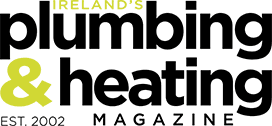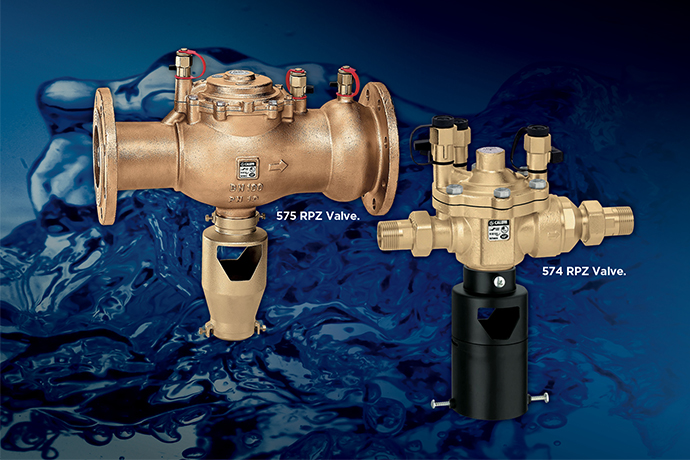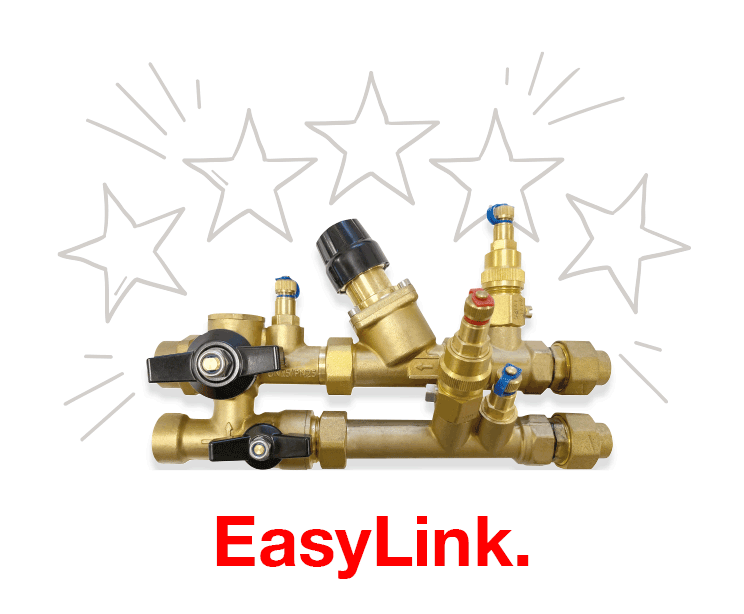Potable water from the mains system may suffer from hazardous pollution caused mainly by contaminated fluids from plumbing systems flowing back directly into the mains supply. This phenomenon, termed “back flow”, occurs when: a) the pressure in the main water system is less than that in the downstream circuit (back siphoning). This situation may occur when a pipe is broken in the mains system or when consumer demand on the mains supply is very heavy; b) the pressure in the downstream circuit rises (counter pressure) due, for example, to water being pumped from a well.
A backflow prevention device is used to protect potable water supplies from being contaminated or polluted. These include RPZ valves, double check valves, single check valves, non-return valves and are used in both domestic and commercial systems.
Legislation
In the case of RPZ valves, in the UK there are legal requirements regulating water installations in domestic, commercial and healthcare premises. The legislation that governs water installations within private premises is set out in:
• The Water Industry Act 1991
• The Water Supply (Water Fittings) Regulations 1999
• The Water Byelaws 2000, Scotland
• European Standard/British
Standard 1717
To prevent the contamination of the wholesome water supply system, the Water Regulations require backflow protection devices to be installed at or near to all points where water is to be drawn off for use.
Fluid categories
As part of regulations, Fluid Categories identify the level of contamination risk that needs to be prevented. They include:
Fluid Category 1: Wholesome water supplied by the undertaker and complying with the requirements made under section 67 of the Water industry Act 1991/ the Water Supply (Water Quality) (Scotland) Regulations 1990 and any amendment.
Fluid Category 2: Water in fluid category 1 whose aesthetic quality is impaired owing to:
– a change in its temperature, or
– the presence of substances or organisms causing a change in its taste, odour or appearance, including water in hot water distribution systems.
Fluid Category 3: Fluid which represents a slight health hazard because of the concentration of substances of low toxicity, including any fluid which contains:
– ethylene glycol, copper sulphate solution or similar chemical additives, or
– sodium hypochlorite (chloros and common disinfectants)
Fluid Category 4: Fluid which represents a significant health hazard because of the concentration of toxic substances, including any fluid which contains:
– chemical, carcinogenic substances or pesticides (including insecticides an herbicides), or
– Environmental organisms of potential health significance
Fluid Category 5: Fluid which represents a serious health hazard because of the concentration of pathogenic organisms, radioactive or very toxic substances, including any fluid which contains:
– faecal material or other human waste:
– butchery or other animal waste: or
– pathogens from any other source
Risk assessment and specifying backflow devices
Given the potential dangers of the phenomenon and the requirements of current legislation, a risk assessment of backflow pollution must be carried out on the basis of the type of system and the characteristics of the fluid that flows inside it. A suitable backflow prevention device must be selected on the basis of the assessment performed by the system designer and the mains supplier. The device must be located along the internal distribution system at the points at risk of backflow, which would be hazardous to human health. The protection can be provided by inserting a backflow preventer at critical points in the circuit at the inlet from the main supply or in the internal distribution system. This will prevent the backflow of polluted water in all systems for which direct connection to the mains or an internal supply is considered hazardous.
For example, when specifying which RPZ valve is required for the system you are working on, it must adhere to the applicable fluid category. The Altecnic range of BA type RPZ backflow prevention devices are designed for applications in water distribution systems to prevent back siphonage and back flow in Fluid Category 4 applications.
The Altecnic range of BA type RPZ backflow prevention devices (the 574, 575 and 570) are WRAS approved products and provide the highest standard of protection to a system. Should the need arise, dismantling and maintenance operations of the 574, 575 and 570 are simple and easy to perform with components that are easy to inspect and replace without disconnecting the valve body from the pipework. This ensures that the system can continue to remain functional, whilst maintaining its high quality.
The 574, 575 and 570 ‘BA’ backflow preventers have been designed with all construction details required for properly functioning positive action devices; the best possible safety conditions are therefore ensured under all conditions.
When selecting the backflow preventer for a modern system, an installer should always consider the overall design of the device, ensuring that it meets all legislation and is as efficient as possible. The device should be well suited to the system to ensure the safety of the end user, with the water supply being protected from contamination being the main priority of the installer.
For more information, contact Chris Reilly, Country Manager for Ireland, on +353 (0)85 215 2288 or e-mail chris.reilly@altecnic.co.uk or Gary Swann, Northern Ireland Sales Manager on +44 (0)7760 596727 or e-mail gary.swann@altecnic.co.uk or visit the website at www.altecnic.co.uk











